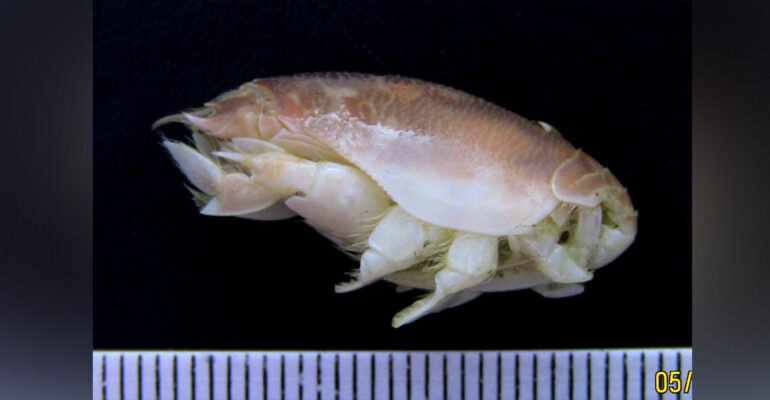Researchers from IPB University Discover a New Species of Mole Crab on the Southern Coast of Java

The world of science once again records an important discovery from Indonesia. A team of researchers from IPB University, in collaboration with Universitas Medan Area, successfully identified and described a new species of mole crab from the Emerita genus, which they have named Emerita pangandaran.
This discovery was officially published in the prestigious taxonomy journal Zootaxa on May 5, 2025.
The mole crab, also known as the sand crab, is a small crustacean inhabiting sandy beaches. Previously, only one species from the Emerita genus was known to inhabit Indonesian waters, namely Emerita emeritus. However, during a scientific expedition in the Pangandaran and Cilacap coastal areas, the researchers found specimens that were morphologically and genetically distinct.
“Emerita pangandaran has distinctive features on the anterior edge of the carapace (dorsal shell), which is serrated (crenulate), differing from E. emeritus, whose edges are smooth,” explained Dr Achmad Farajallah, a lecturer at the Department of Biology, IPB University, and the lead author of the publication.
This finding is supported by mitochondrial DNA analysis of the COI gene, which shows a genetic distance of 15–16 percent between the two species—indicating a significant evolutionary divergence.
Specimens of Emerita pangandaran were collected from the intertidal zones of coarse sandy beaches in Pangandaran and Cilacap, and have now been preserved at the Museum Zoologicum Bogoriense as scientific reference material.
The research also involved Prof Yusli Wardiatno from the Department of Aquatic Resources Management, IPB University, and young researchers Dr Vinna Windy Putri and Dr Nisfa Hanim from Universitas Medan Area.
According to Prof Yusli Wardiatno, the discovery of Emerita pangandaran makes a significant contribution to enriching the list of crustacean biodiversity in Indonesia.
“This species adds to the diversity of sandy beach fauna that had not previously been identified scientifically. This finding also indicates that many potential new species are still awaiting discovery in Indonesia’s coastal regions,” he stated.
He further added that a deeper understanding of biodiversity is essential as a foundation for sustainable coastal resource management.
The discovery of Emerita pangandaran adds to the growing list of unique species from Indonesia’s tropical regions. It also serves as a reminder of the importance of continued research on coastal ecosystems.
This research was supported by the postdoctoral grant from IPB University and the Flagship Basic Research program from the Directorate General of Higher Education, Research, and Technology, Ministry of Education, Culture, Research, and Technology of the Republic of Indonesia. (IAAS/PRP)



